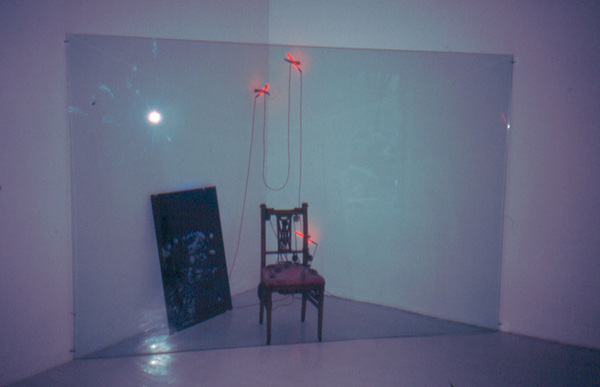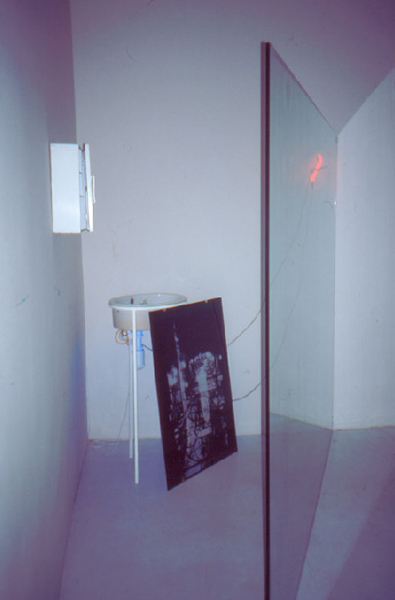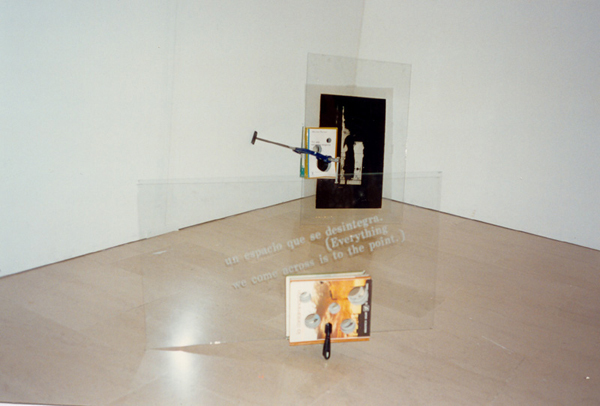
Untitled, 1995. Books, words, jacks and neons. 700 x 120 x 137 cm. Unique edition. |

Untitled, 1995. Glass, chair, speakers, neons and photograph. 200 x 150 x 300 cm. Unique edition. |

Untitled, 1995. Books, jack, glass with holes and word. 60 x 57 x 131 cm. Unique edition. |

Untitled, 1995. Glass, washbasin, photography and bathroom cupboard. 200 x 170 x 247 cm. Unique edition. |

Untitled, 1995. Jacks, books with holes, neons and glass. 70 x 55 x 143 cm. Unique edition. |

Untitled, 1995. Books with holes, photograph, glass and jack. 40 x 37 x 70 cm. Unique edition. |

Untitled, 1995. Books with holes, photograph, glass, jack and neon. 40 x 50 x 70 cm. Unique edition. |
Nothing is ever what it seems.
This project describes moving points of reference. The audio component and the central point of the photographs play with our understanding of what exactly is our reality. The uncertainty of our position inside this space oscillates between the real and the imagined. This perspective is even greater if we consider the reflections of the viewer on the work.
Descifra tu tiempo consists of four large elements. Scattered across the gallery are six mountains of books compressed by two clamps. A sheet of glass with text engraved on it lies across each one of these piles of books. These reference the passage between real and written time.
In a corner of the space there is a sink. The water flows emitting a continuous sound. A large photo in black and white resting in the sink shows a cityscape seen from the perspective of a balcony. The focal point of the photograph rests on the street. Red neon light demarcates the wall as if it were a wound. The corner is dissected by a large open sheet of glass (2x3m) that allows the viewer to enter into and visit the angular space that is formed.
This situation is reflected in the opposite corner. A large glass surface (2x3m) rests in the corner creating a type of window display. In the corner, opposite the viewer, there is a chair connected to two speakers. On the left, a photograph rests on the ground. It is similar to the other photo but the difference lies in the fact that now the focal point is on the bars of the balcony. On the other side of the photograph, three red neon lights splash across the wall. A sound of water can be heard from the other side of the room.
A white neon light runs lengthwise along the top of one of the walls. It is reflected in the glass and suggests a simulation that represents the uncertainty of architectural space.

